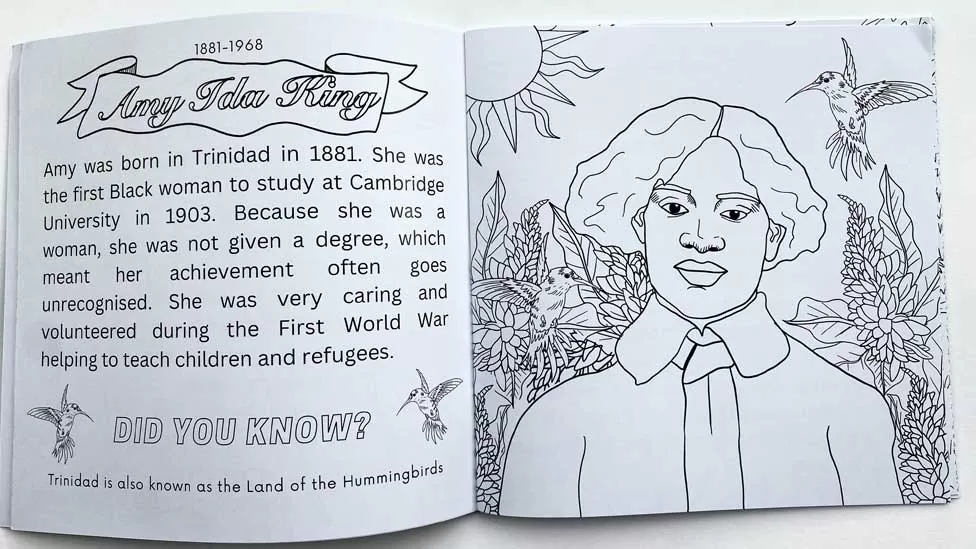Exhibition Offers Insight into Cambridge’s African and Caribbean Connections.
The Fitzwilliam Museum in Cambridge is currently hosting the Black Atlantic exhibition, which features a unique coloring book titled “Cambridge Black History” by artist Selena Scott. This captivating coloring book offers a vibrant exploration of the lives and contributions of historical black figures connected to the city, shedding light on an often overlooked aspect of Cambridge’s rich history.
Selena Scott, who grew up in Girton, Cambridge, embarked on this creative project during a two-month internship at the museum. Her mission was to craft a public resource that could engage and educate a wide audience. Scott chose to create a coloring book as she believed it would be “accessible to as broad a range of people as possible” and could provide a “fun and playful” way for individuals to delve into the city’s diverse past.
The “Cambridge Black History” coloring book features 12 historical black figures who have significant ties to Cambridge. One notable figure included is Amy Ida King, a Trinidad-born woman who made history as the first black woman to earn a degree from The University of Cambridge in 1903. Other remarkable individuals featured in the book include the 18th-century child prodigy violinist George Bridgetower, who famously had a feud with Beethoven and performed for King George IV, and Ira Aldridge, one of the pioneering black actors to grace the Shakespearean stage. Selena Scott also pays tribute to her own grandfather, a passionate advocate for education in the Caribbean who played a pivotal role in bringing education to underserved communities and later resided in Cambridge.

The Fitzwilliam Museum, founded on profits from the transatlantic slave trade, is hosting the Black Atlantic exhibition as a reflection on this historical connection and its enduring legacy. The exhibition serves as a testament to how Cambridge has been shaped by its intricate links with Africa and the Caribbean. It features an array of works by contemporary artists such as Yinka Shonibare and Hew Locke, complemented by historical artifacts from the museum’s collection.
The “Cambridge Black History” coloring book emerges as a crucial addition to this exhibition, providing an accessible and engaging avenue for individuals to discover and appreciate the often uncelebrated facets of Cambridge’s black history. It is a poignant reminder that black history is an integral and inseparable part of British history, deserving recognition and respect.
Resources:
2.https://www.bbc.co.uk/news/uk-england-cambridgeshire-66796124
3.https://www.msn.com/en-xl/news/other/artist-emotional-after-creating-black-history-book/ar-AA1gECq8